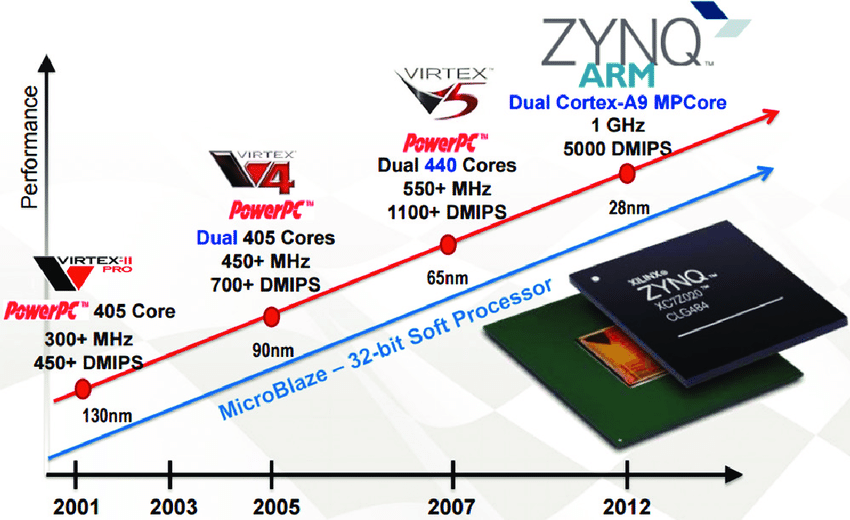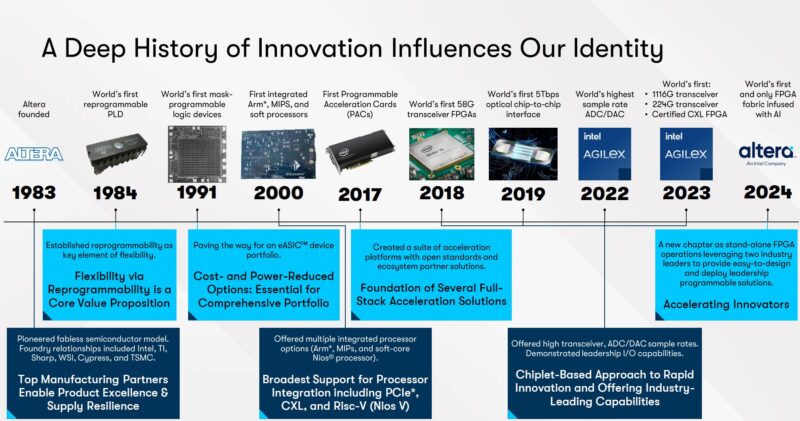Time: 2025-03-04 11:39:50View:
Here’s a structured overview of "The Three Ages of FPGA: A 30-Year Review of Programmable Technology", highlighting the evolution of FPGAs (Field-Programmable Gate Arrays) and their transformative impact across three distinct eras:

Key Focus: Birth of programmable logic and foundational FPGA architectures.
Milestones:
1985: Xilinx co-founders Ross Freeman and Bernard Vonderschmitt invent the first commercially viable FPGA (XC2064).
1990s: Altera, Actel (now Microchip), and Lattice Semiconductor enter the market with antifuse and SRAM-based FPGAs.
Technology:
Simple logic blocks with basic programmable interconnects.
Limited capacity (hundreds to thousands of gates).
Focus on glue logic (replacing discrete TTL/CMOS chips).
Applications:
Prototyping, military/aerospace systems, and telecommunications.
Early adoption in niche markets due to high cost and limited performance.
Challenges:
High power consumption, slow speeds, and lack of design tools.

Key Focus: Scaling complexity, embedded systems integration, and mainstream adoption.
Milestones:
2000s: Xilinx Virtex and Altera Stratix families introduce embedded multipliers, block RAM, and DSP slices.
2010: 28nm process nodes enable higher logic density and lower power.
2015: Intel acquires Altera for $16.7B, signaling FPGAs’ strategic value.
Technology:
Hardened IP cores: Embedded processors (e.g., ARM Cortex-M/A), PCIe, Ethernet.
Mixed-signal FPGAs: Integration of ADCs/DACs.
Partial Reconfiguration: Dynamic re-programming of subsets of logic.
Applications:
Telecom/Networking: 4G infrastructure, software-defined radio.
Automotive: Advanced driver-assistance systems (ADAS).
Consumer Electronics: Video processing, IoT edge devices.
Market Drivers:
Demand for reconfigurable, low-NRE (non-recurring engineering) solutions.
Rise of High-Level Synthesis (HLS) tools (e.g., Vivado HLS, OpenCL).
Key Focus: FPGAs as adaptable compute engines for AI, cloud, and hyperscale applications.
Milestones:
2020s: Xilinx Versal (ACAP) and Intel Agilex combine FPGA fabric with AI engines, CPUs, and adaptive SoCs.
2023: AMD completes acquisition of Xilinx, integrating FPGAs into data center roadmaps.
Technology:
Heterogeneous Architectures: FPGA + CPU/GPU/AI accelerators.
Advanced Packaging: 3D stacking (e.g., chiplets, HBM integration).
AI-Driven Tools: ML-based place-and-route algorithms.
Applications:
AI/ML: Real-time inferencing, custom neural network acceleration.
Cloud/Data Centers: Smart NICs, computational storage, and hyper-scale acceleration.
5G/6G: Beamforming, massive MIMO, and Open RAN.
Edge Computing: Low-latency, energy-efficient processing.
Market Drivers:
Explosion of AI workloads and need for domain-specific architectures (DSAs).
Shift to software-defined everything (SDR, SDN, SDV).
Convergence with AI/ML: FPGAs as reconfigurable AI accelerators.
Cloud-Native FPGAs: AWS F1, Microsoft Azure, and Alibaba Cloud offering FPGA-as-a-Service (FaaS).
Democratization: Open-source tools (e.g., SymbiFlow, LiteX) lowering entry barriers.
Sustainability: Energy-efficient FPGAs for green computing.
Over 30 years, FPGAs have evolved from simple glue-logic replacements to adaptive compute platforms central to AI, cloud, and next-gen connectivity. Each "age" reflects advancements in process technology, toolchains, and market demands, positioning FPGAs as indispensable in an era of rapid technological change. The future lies in intelligent adaptability—FPGAs that dynamically reconfigure to meet the needs of AI, quantum computing, and beyond.